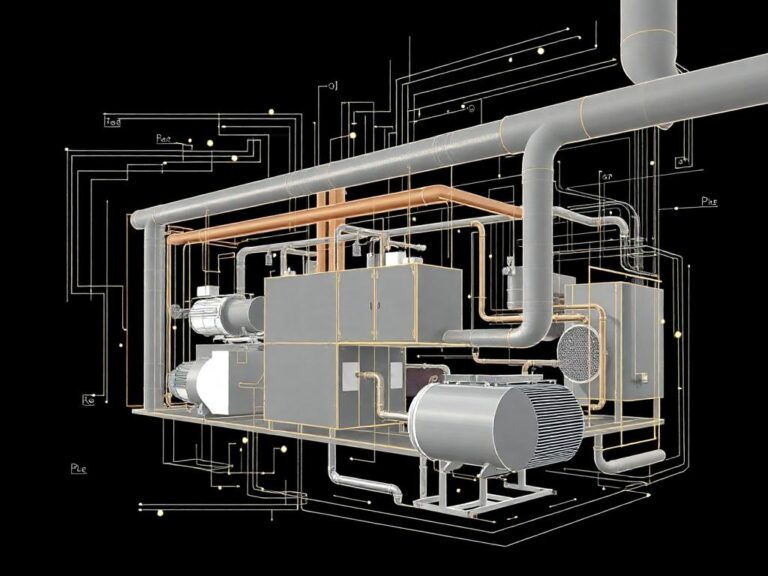
Introduction
BIM MEP (Mechanical, Electrical, and Plumbing) is a game-changer for modern projects.
This guide explores BIM MEP, its benefits, and its impact on construction and design.
What is BIM MEP?
BIM MEP integrates mechanical, electrical, and plumbing systems into a single model.
It ensures seamless collaboration among architects, engineers, and contractors.
This approach minimizes errors and enhances project efficiency.
Why BIM MEP is Essential for Modern Construction
BIM MEP streamlines complex systems in building projects.
It improves accuracy, reduces costs, and saves time.
Additionally, it enhances sustainability by optimizing resource usage.
Key Benefits of BIM MEP
- Improved Collaboration
BIM MEP fosters better communication among stakeholders.
It allows real-time updates and shared access to project data.
This reduces misunderstandings and ensures everyone is on the same page.
- Enhanced Visualization
BIM MEP provides 3D models for better project visualization.
It helps identify potential clashes and resolve them early.
This leads to fewer on-site issues and smoother project execution.
- Cost and Time Savings
BIM MEP reduces rework and material waste.
It also speeds up project timelines by improving planning.
These factors contribute to significant cost savings.
- Sustainability and Energy Efficiency
BIM MEP optimizes energy usage and reduces carbon footprints.
It enables the design of eco-friendly systems.
This aligns with global sustainability goals.
- Better Facility Management
BIM MEP models serve as valuable tools for facility management.
They provide detailed information for maintenance and operations.
This extends the lifespan of building systems.
How BIM MEP Works
BIM MEP involves creating detailed 3D models of MEP systems.
These models include data on dimensions, materials, and performance.
They are shared among stakeholders for coordination and decision-making.
Step 1: Design and Modeling
Engineers create MEP models using BIM software.
These models include all mechanical, electrical, and plumbing components.
Step 2: Clash Detection
BIM software identifies clashes between different systems.
This ensures compatibility and avoids on-site conflicts.
Step 3: Coordination and Collaboration
Stakeholders review and update the models collaboratively.
This ensures all systems work together seamlessly.
Step 4: Construction and Installation
The finalized models guide the construction process.
This ensures accurate installation of MEP systems.
Step 5: Facility Management
The BIM MEP model is handed over for facility management.
It serves as a reference for maintenance and upgrades.
BIM MEP Software Tools
Several software tools support BIM MEP processes.
Popular options include Autodesk Revit, Navisworks, and Trimble MEP.
These tools offer advanced features for modeling and collaboration.
Challenges in Implementing BIM MEP
- High Initial Costs
Implementing BIM MEP requires investment in software and training.
However, the long-term benefits outweigh the initial costs.
- Skill Gaps
BIM MEP requires specialized skills and expertise.
Training programs can help bridge this gap.
- Resistance to Change
Some professionals may resist adopting new technologies.
Clear communication and training can ease this transition.
Future Trends in BIM MEP
- Integration with IoT
BIM MEP will integrate with the Internet of Things (IoT).
This will enable smart building systems and real-time monitoring.
- AI and Machine Learning
Artificial intelligence will enhance clash detection and system optimization.
This will further improve project efficiency.
- Cloud-Based Collaboration
Cloud platforms will enable seamless collaboration among global teams.
This will streamline project management and data sharing.
Conclusion
BIM MEP is revolutionizing the construction and design industry.
It offers numerous benefits, including cost savings and sustainability.
By adopting BIM MEP, professionals can stay ahead in a competitive market.
FAQs
- What is the difference between BIM and BIM MEP?
BIM is a broader concept, while BIM MEP focuses on mechanical, electrical, and plumbing systems.
- Which industries benefit from BIM MEP?
BIM MEP is widely used in construction, architecture, and engineering industries.
- Is BIM MEP suitable for small projects?
Yes, BIM MEP can benefit projects of all sizes by improving efficiency and reducing costs.
- How does BIM MEP improve sustainability?
BIM MEP optimizes energy usage and reduces waste, contributing to eco-friendly designs.
- What skills are needed for BIM MEP?
Professionals need expertise in BIM software, MEP systems, and collaboration tools.
By following this guide, you can harness the power of BIM MEP for your projects.
Stay updated with the latest trends and tools to remain competitive in the industry.
